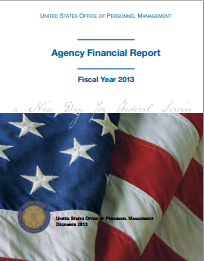- Home
- Agencies
- Department of Agriculture
- Department of Housing and Urban Development
- General Services Administration
- Department of Commerce
- Department of the Interior
- National Aeronautics and Space Administration
- Department of Defense
- Department of Justice
- National Science Foundation
- Department of Education
- Department of Labor
- Office of Personnel Management
- Department of Energy
- Department of State
- Small Business Administration
- Environmental Protection Agency
- Department of Transportation
- Social Security Administration
- Department of Health and Human Services
- Department of the Treasury
- U.S. Agency for International Development
- Department of Homeland Security
- Department of Veterans Affairs
- Goals
- Initiatives
- Programs
Primary tabs
Strategic Objective
SG09.01 Sponsor high quality, consumer friendly, affordable insurance products
Strategic Objective
Overview
- Ensuring Multi-State Plans (MSP) and Federal Employees Health Benefits (FEHB) health plans cover the full range of Essential Health Benefits.
- Leveraging our experience in the FEHB and MSP programs to identify and implement best practices across the insurance portfolio.
- Providing responsive customer service to insured populations.
- Analyzing complaints and appeals to elucidate opportunities to better meet the needs of enrollees.
- Updating electronic consumer decision support and health plan selection tools to optimize enrollee choice.
- Developing a comprehensive health plan assessment methodology that evaluates health care quality, customer service, and financial performance.
Progress Update
OPM administers the Federal Employees Health Benefits (FEHB) Program, which includes a comprehensive package of health benefits for more than 8.2 million employees, retirees, tribal employees, and dependents. One of OPM’s aims is to restrain premium increases while offering essential health benefits. OPM engages in annual negotiations with health carriers and has been able to limit average premium increases to less than 6.5 percent for five years. Another aim is to ensure enrollees have sufficient information needed to make a health plan decision. OPM provides plan brochures, web-based decision tools, and customer satisfaction survey results to enrollees prior to the annual Open Season. A third aim is to ensure a variety of plan options are available to enrollees. OPM is adding four new health plans for the 2016 plan year.
OPM also administers the Multi-State Plan Program established under the Affordable Care Act. The Multi-State Plan Program provides Americans more options for affordable coverage through www.healthcare.gov. For the 2015 plan year, OPM contracted with 13 Consumer Operated and Oriented Plans, and also contracted with 38 Blue Cross and Blue Shield plans. Collectively, they offered 179 individual plan options that consumers could purchase from the marketplace as well as 33 options available through the Small Business Health Options Program. OPM has not yet finalized negotiations with Multi-State Plan Program plans for the 2016 plan year.
As of the beginning of 2015, applicable large employers, including the Federal Government, were subject to the Employer Shared Responsibility provisions under sections 6056 and 4980H of the Internal Revenue Code. These employers are required to submit information to the Internal Revenue Service about the health insurance offered to eligible full-time employees. They are also required to furnish this information to their full-time employees. This information is due to the IRS and must be provided to employees in early CY 2016. One of OPM’s roles as administrator of the FEHB Program is to provide guidance to agencies to facilitate their compliance with Internal Revenue Code section 6056. To assist Federal agencies in their administration of these provisions, OPM has provided guidance on its website. During FY 2016, OPM will continue to work with Federal agencies, shared service centers and health insurance carriers to ensure reporting requirements are met by the CY 2016 deadlines.
OPM, in consultation with the Office of Management and Budget, has determined that performance toward this strategy is making noteworthy progress.









